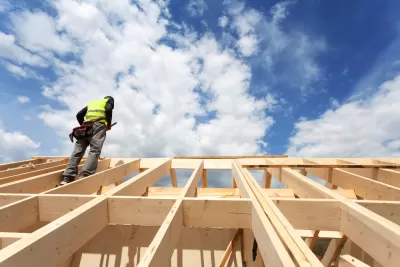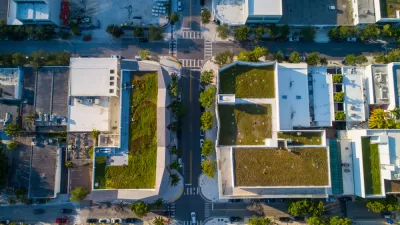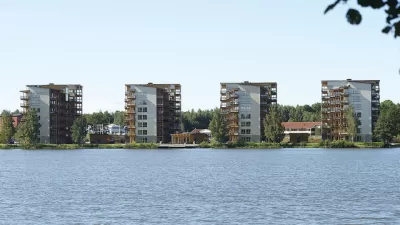New green buildings may be de riguer, but preservation does less harm.

In the last 50 years, humans have used more raw materials and created more waste than in all previous history,” report Jean Carroon FAIA and Ben Carlson.
By now, recycling and reuse are firmly rooted concepts in the American consumer conscience. But when it comes to building, the merits of maintaining and preserving existing buildings are often trumped by the short-term cost efficiencies of replacement and the rewards of green certification.
The built environment is the single largest consumer of materials, which account for 42 percent of all greenhouse gasses emitted in the United States. "Every product, no matter how green, has environmental impacts that include carbon emissions, water and energy consumption, pollution, toxicity, and waste," write Carroon and Carlson. Toxicity from building materials, such as the flame retardants used on everything from carpets to cables, impacts all Americans. "These chemicals are linked to dna mutation, thyroid disruption, memory and learning problems, delayed mental and physical development, lower IQ, advanced puberty, and reduced fertility."
Another critical concern often overlooked is the immediate impact of greenhouse gases emitted from building material extraction, production, construction, and disposal in favor of the touted energy efficiencies of new green buildings. But these energy savings are long-term projections, according to Careen and Carlson, pointing to a 2012 report for the National Trust for Historic Preservation. "It can take between 10 and 80 years for even an energy-efficient new building to overcome, through cleaner operations, the climate change impacts created by its construction." Carroon and Carlson argue that even if we do eventually achieve the goal of manufacturing totally clean and green buildings, there is inherent value in preservation. "Doesn’t a sustainable world need to value what already exists not only for environmental reasons but also to foster creativity, social engagement, and a unique sense of place?"
FULL STORY: Old is the new green

Alabama: Trump Terminates Settlements for Black Communities Harmed By Raw Sewage
Trump deemed the landmark civil rights agreement “illegal DEI and environmental justice policy.”

Planetizen Federal Action Tracker
A weekly monitor of how Trump’s orders and actions are impacting planners and planning in America.

The 120 Year Old Tiny Home Villages That Sheltered San Francisco’s Earthquake Refugees
More than a century ago, San Francisco mobilized to house thousands of residents displaced by the 1906 earthquake. Could their strategy offer a model for the present?

In Both Crashes and Crime, Public Transportation is Far Safer than Driving
Contrary to popular assumptions, public transportation has far lower crash and crime rates than automobile travel. For safer communities, improve and encourage transit travel.

Report: Zoning Reforms Should Complement Nashville’s Ambitious Transit Plan
Without reform, restrictive zoning codes will limit the impact of the city’s planned transit expansion and could exclude some of the residents who depend on transit the most.

Judge Orders Release of Frozen IRA, IIJA Funding
The decision is a victory for environmental groups who charged that freezing funds for critical infrastructure and disaster response programs caused “real and irreparable harm” to communities.
Urban Design for Planners 1: Software Tools
This six-course series explores essential urban design concepts using open source software and equips planners with the tools they need to participate fully in the urban design process.
Planning for Universal Design
Learn the tools for implementing Universal Design in planning regulations.
Clanton & Associates, Inc.
Jessamine County Fiscal Court
Institute for Housing and Urban Development Studies (IHS)
City of Grandview
Harvard GSD Executive Education
Toledo-Lucas County Plan Commissions
Salt Lake City
NYU Wagner Graduate School of Public Service




























